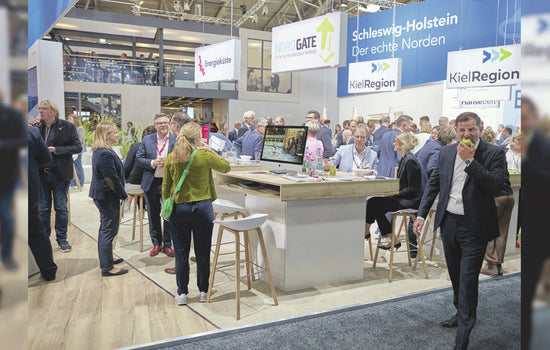Gengenbach, 16.09.2024: Infener, ein europaweit führendes Unternehmen im Bereich der Herstellung von grünem Wasserstoff, und die Stadt Gengenbach haben heute die Planungen für einen 20-Megawatt-Hub (MW) bekannt gegeben. Der Hub soll jährlich bis zu 2.000 Tonnen grünen Wasserstoff produzieren und den Ortenaukreis dezentral, wirtschaftlich und klimaneutral mit Energie versorgen. Infener produziert grünen Wasserstoff durch die Elektrolyse von Wasser in netzdienlichen H2-Hubs, die mit erneuerbarer Energie betrieben werden.

„Grüner Wasserstoff ist nicht nur ein Schlüssel zur Energiewende, sondern auch ein bedeutender Wachstumsfaktor für unsere regionale Wirtschaft und Industrie. Gengenbach hat das klare Ziel, sich als Standort für die Produktion und Nutzung von grünem Wasserstoff zu etablieren. Der H2-Hub von Infener bietet eine verlässliche Perspektive, einen CO2-freien Beitrag zur Versorgungssicherheit im Ortenaukreis zu leisten“, betont Thorsten Erny, Bürgermeister der Stadt Gengenbach.
Das Projekt auf dem Gewerbegebiet “Kinzigpark I” befindet sich aktuell in der Konzeptionsphase. Die Realisierung hängt von den Ergebnissen dieser Planungsphase, dem Abschluss von Abnahmeverträgen sowie den erforderlichen Investitionsentscheidungen ab. Neben der Unterstützung durch den Bürgermeister, die Stadtwerke und der regionalen Wirtschaftsförderung wird das Vorhaben auch von den Klimapartnern Südbaden wohlwollend begleitet.

„Dank der hohen Produktionskapazität sehen wir großes Potenzial, in der Region Partner zu gewinnen, die sowohl Wasserstoff als auch entstehende Nebenprodukte weiterverarbeiten. Solche Kooperationen werden maßgeblich zum Aufbau eines nachhaltigen, lokalen Ökosystems beitragen, das nicht nur die regionale, sondern die gesamte europäische Wirtschaft stärkt“, sagt Joel Vogl, CEO und Co-Founder von Infener.






